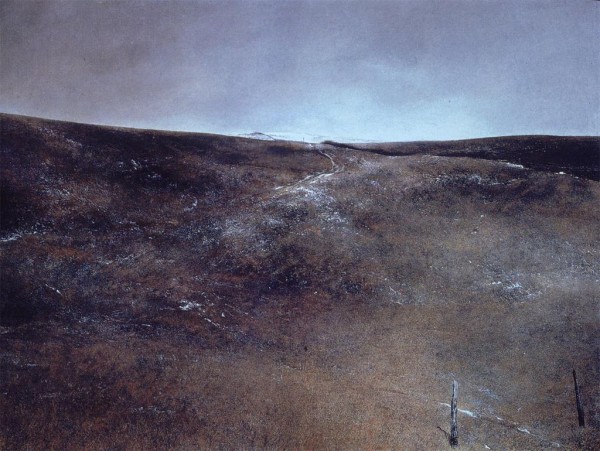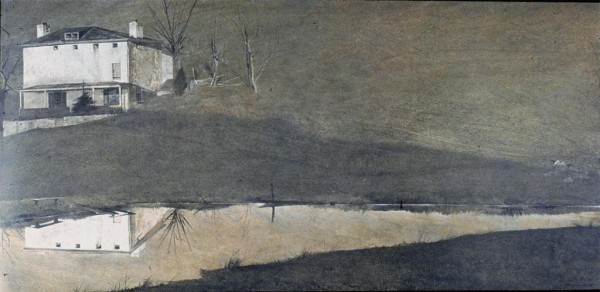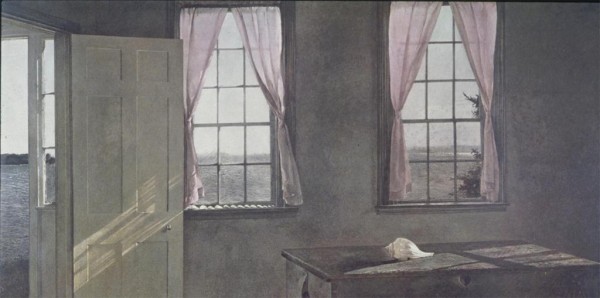Andrew Wyeth
Wednesday, 14 August 2013




From top to bottom: Christina’s World (1948), Snow Flurries (1953), Brown Swiss (1957), Her Room (1963)
“Wyeth gave America a prim and flinty view of Puritan rectitude, starchily sentimental, through parched gray and brown pictures of spooky frame houses, desiccated fields, deserted beaches, circling buzzards and craggy-faced New Englanders. A virtual Rorschach test for American culture during the better part of the last century, Wyeth split public opinion as vigorously as, and probably even more so than, any other American painter including the other modern Andy, Warhol, whose milieu was as urban as Wyeth’s was rural.
Because of his popularity, a bad sign to many art world insiders, Wyeth came to represent middle-class values and ideals that modernism claimed to reject, so that arguments about his work extended beyond painting to societal splits along class, geographical and educational lines. One art historian, in response to a 1977 survey in Art News magazine about the most underrated and overrated artists of the century, nominated Wyeth for both categories.
Art critics mostly heaped abuse on his work, saying he gave realism a bad name. Supporters said he spoke to the silent majority who jammed his exhibitions. ‘In today’s scrambled-egg school of art, Wyeth stands out as a wild-eyed radical,’ one journalist wrote in 1963, speaking for the masses. ‘For the people he paints wear their noses in the usual place, and the weathered barns and bare-limbed trees in his starkly simple landscapes are more real than reality.'”
-Excerpt from NYT Obituary by Michael Kimmelman